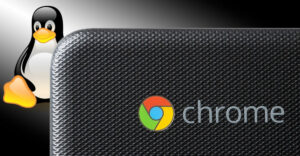
Significant advances in Light Emitting Diodes (LED) technology mean it’s now possible to create light approaching that of a car headlamp with just a handheld device.
If you’re in the market for one of these advanced flashlights, you’re going to see one word continually appear in the product descriptions. That word is “Cree.”
In this context, Cree doesn’t refer to a major Native American tribe that might have gotten into the flashlight industry; it refers to the maker some of the most advanced LEDs ever invented — LEDs that are so bright and efficient they can provide 10 times the light of an old tungsten bulb in a smaller form factor.
These LED emitters have superseded both incandescent tungsten and high intensity discharge (HID) technology in flashlights. Super-silicone carbide chips, plus powerful, small form-factor lithium-ion batteries have changed everything in this space.
One of Cree’s LED chips is the XM-L, which you’ll note is the ipso facto standard when you start looking around.
Throw vs. Flood
Determine the anticipated use of the flashlight to figure out whether the light should be architected toward a “throw” or “flood” design.
“Throw” means that the light is projected far, and “flood” means that the light illuminates a wide area. Throw uses more power.
An activity like hiking or mountain-biking requires long runtime; throw for the trail ahead; and flood for the immediate area. Long-runtime and throw adds weight because of the extra battery capacity required.
Good Compromise
Buy at least two flashlights — one good for throw and one designed for flood. Buylightweight lights with short runtime for on-foot sports; and heavy lights with long runtimes that you can transport in the car.
You may find you need at least four flashlights.
You see where I’m going with this? At the very least, you have the beginnings of a new hobby, and a brand-new flashlight collection.
Size Issues
Choose optics geometry carefully. Geometry of the reflector in the head determines the amount of light generated. Generally, the larger the head, the more throw that can be produced. But the larger the head, the less portable and more expensive the light.
A large diameter reflector provides a more focused beam of light — good for throw. However, it’s bulky, and even though the battery-containing body may be thin and narrow, due to good power-to-size ratio batteries, you won’t be able to easily carry the flashlight in your pocket.
For my daily driver, I chose a design in which the reflector is the same circumference as the body, so it all slides into a jeans pocket. I compromised on the long-distance throw, but I have a light that’s great for immediate work like camping and reading.
Reflector Finish
Choose between a smooth, mirror finish or a rough, orange-peel finish.
Smooth is good for tight, focused bright-spot beams; rough is good for a no-shadow beam. Rough has a shorter throw.
Power Source
Choose your battery technology based on your willingness to take on risk and learn about the technologies. Rechargeable lithium-ion is the state-of-the-art battery of choice. It has the best power-to-size ratio compared with other chemistries. A one-cell solution is safer than mixing cells.
However, rechargeable lithium-ion cells in a flashlight environment have been known to be volatile. Choose more expensive non-rechargeable lithium if you don’t want to get into learning the characteristics of battery chemistry.
About Lumens
Understand lumens. The total amount of visible light emitted by the LED is measured in lumens. You’ll see flashlights with the Cree XM-L chip boasting 900-lumens. Absorb those figures with a grain of salt.
Technically, a chip is capable of supplying defined lumens at a certain voltage. But variables in optics design, power, and so on mean the lumens rating is loose — and since there’s no official certification, the lumens specs should be considered a rough guide.
Other Considerations
Choose a waterproof design for extreme ruggedness — diving requires it.
Select a light with varying output levels. You will need a dimming function. An output level of 900-lumens is significant, and reading will be impossible due to glare.
Eyesight damage could occur in close-quarters. High lumens output may create heat and will also churn through batteries.
Cheap vs. Expensive
Pocket sized-lights based on XM-Ls can run as low as US$15 at Amazon. I have the Chinese-assembled Ultrafire at that price, and haven’t had any problems with build.
Some flashlight collectors — as you and I may become if we can’t control ourselves — reckon coinage should be spent on highest-quality batteries and charger instead of high-end construction.
The switch can be a point of weakness in cheaper lights, according to some flashlight fans.
Highly active flashlight community Candlepower Forum members debate endlessly on this and many other subjects related to the art of the flashlight.
Want to Ask a Tech Question?
Is there a piece of tech you’d like to know how to operate properly? Is there a gadget that’s got you confounded? Please send your tech questions to me, and I’ll try to answer as many as possible in this column.
And use the Talkback feature below to add your comments!





















































